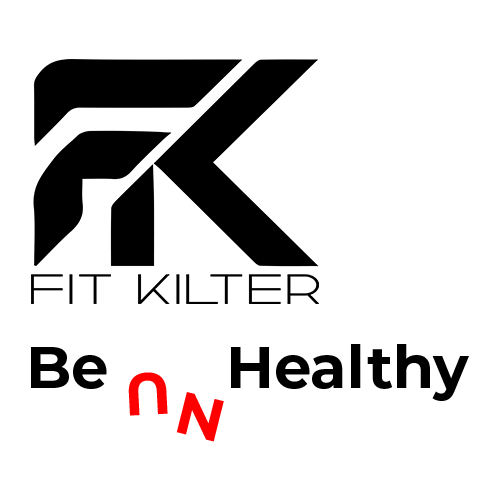Belly fat, often referred to as visceral fat, is a common concern for many individuals on their fitness and health journey. It tends to be stubborn and challenging to shed, making it a source of frustration. Beyond aesthetic concerns, excess belly fat can have significant health implications, increasing the risk of heart disease, diabetes, and other chronic conditions. While it’s essential to remember that spot reduction is largely ineffective, a holistic approach that combines a balanced diet, regular physical activity, and stress management is key to achieving a healthier body composition and reducing belly fat. Each person’s body is unique, and what works for one may not work for another, so finding a sustainable lifestyle that promotes overall well-being is the ultimate goal in the battle against belly fat.
Diet for Belly Fat Loss: Your Guide to a Trim Waistline
Understanding Belly Fat:
Before diving into dietary strategies, it’s important to understand why belly fat accumulates. Factors such as genetics, hormonal changes, sedentary lifestyle, and poor dietary choices can contribute to its formation. Visceral fat tends to be more metabolically active and responsive to dietary changes than subcutaneous fat (fat just under the skin). Therefore, targeted changes in your diet can lead to its reduction.
Balanced Diet Essentials:
- Caloric Deficit: Achieving a caloric deficit by burning more calories than you consume is fundamental to fat loss, including belly fat. Track your daily calorie intake and aim for a gradual and sustainable deficit.
- Nutrient-Dense Foods: Prioritise whole, nutrient-dense foods rich in vitamins, minerals, fibre, and antioxidants. Vegetables, fruits, lean proteins, whole grains, and healthy fats should form the foundation of your diet.
- Protein: Protein is essential for muscle preservation and satiety. Incorporate sources like lean meats, poultry, fish, tofu, legumes, and dairy into your meals.
- Fibre: High-fibre foods promote fullness and support digestive health. Opt for whole grains, vegetables, fruits, and legumes.
- Healthy Fats: Include sources of healthy fats, such as avocados, nuts, seeds, and olive oil, which can aid in appetite control and overall health.
- Limit Added Sugars: Minimise added sugars found in sugary drinks, processed snacks, and desserts. These can contribute to fat accumulation, especially in the abdominal area.
Specific Dietary Strategies:
- Reduce Processed Foods: Highly processed foods are often high in unhealthy fats, sugars, and empty calories. Limit their consumption.
- Control Portion Sizes: Be mindful of portion sizes to avoid overeating, even when consuming healthy foods.
- Choose Low-Glycemic Carbs: Opt for carbohydrates with a low glycemic index (GI), as they can help regulate blood sugar levels and reduce fat storage. Examples include whole grains, legumes, and non-starchy vegetables.
- Hydrate Wisely: Drink plenty of water throughout the day, and consider replacing sugary beverages with herbal tea or plain water.
- Moderate Alcohol: Limit alcohol consumption, as excessive intake can contribute to belly fat.
- Probiotics: Incorporate foods rich in probiotics, like yogurt and kefir, to support gut health, which is linked to weight management.
Meal Timing and Frequency:
While meal timing and frequency don’t play as significant a role as overall calorie balance and food quality, some individuals may benefit from strategies like intermittent fasting (IF) or time-restricted eating (TRE). These approaches involve specific eating windows and fasting periods, which can help with calorie control and insulin sensitivity.
Consult a Professional:
Before making significant dietary changes, especially if you have underlying health conditions, it’s advisable to consult with a registered dietitian or healthcare provider. They can provide personalized guidance and ensure your weight loss plan aligns with your unique needs and goals.

Exercises to Lose Belly Fat: Sculpting Your Midsection
Belly fat, also known as visceral fat, can be challenging to shed, but a combination of targeted exercises and an overall fitness routine can help you achieve a trimmer waistline. In this article, we’ll explore a range of exercises that specifically target the abdominal area and contribute to belly fat loss.
Understanding Belly Fat:
Before delving into exercises, it’s important to recognise that spot reduction, or losing fat from a specific area, is not entirely effective. However, exercises that engage the core muscles can help strengthen and tone the abdominal region while contributing to overall fat loss.
1.Cardiovascular Exercises:
Cardiovascular or aerobic exercises are excellent for burning calories and promoting overall fat loss. While they don’t exclusively target belly fat, they contribute to reducing total body fat, including fat around the midsection. Incorporate activities like:
- Brisk Walking: A low-impact option suitable for all fitness levels.
- Running: A high-impact cardio exercise that can effectively burn calories.
- Cycling: Whether on a stationary bike or outdoors, cycling is a great way to engage your legs and core.
- Swimming: An excellent full-body workout that’s gentle on the joints.
Aim for at least 150 minutes of moderate-intensity aerobic exercise or 75 minutes of vigorous-intensity aerobic exercise per week, as recommended by health authorities.
2.High-Intensity Interval Training (HIIT):
HIIT workouts involve short bursts of intense activity followed by brief rest periods. They are known for their calorie-burning efficiency and can help reduce body fat, including belly fat. HIIT exercises may include sprints, burpees, jumping jacks, and mountain climbers. Perform these exercises in short, intense intervals for maximum effect.
3.Core-Strengthening Exercises:
While core-strengthening exercises won’t exclusively target belly fat, they play a crucial role in sculpting the abdominal muscles and providing better definition. Some effective core exercises include:
- Planks: The standard plank, side plank, and variations like forearm planks are excellent for engaging the entire core.
- Crunches: Traditional crunches, reverse crunches, and bicycle crunches are great for targeting the rectus abdominis (the “six-pack” muscles).
- Leg Raises: Lying leg raises and hanging leg raises are effective for working the lower abdominal muscles.
- Russian Twists: This exercise engages the oblique muscles. Use a weight or medicine ball for added resistance.
Incorporate these exercises into your routine at least two to three times per week to strengthen your core.
4.Yoga and Pilates:
Yoga and Pilates are excellent for enhancing core strength, flexibility, and posture. While not high-intensity calorie burners, they can complement your overall fitness routine and help tone the abdominal muscles.
5.Resistance Training:
Strength training exercises that target multiple muscle groups, such as squats, deadlifts, and lunges, can boost metabolism and contribute to fat loss. Building lean muscle mass can also improve overall body composition, including a reduction in belly fat.
6.Mindful Eating:
In addition to exercise, it’s essential to adopt a balanced diet and maintain a caloric deficit to promote fat loss. Avoid excessive consumption of processed foods, sugary beverages, and high-calorie snacks, as they can contribute to belly fat accumulation.
7.Consistency and Patience:
Remember that achieving a trimmer waistline takes time and consistency. Stay committed to your exercise routine, maintain a balanced diet, and monitor your progress. Results may vary from person to person, so be patient and celebrate your achievements along the way.
In conclusion, a combination of cardiovascular exercise, strength training, core workouts, and mindful eating can help you lose belly fat and achieve a healthier, more sculpted midsection. Remember to consult with a fitness professional or healthcare provider before starting any new exercise regimen, especially if you have underlying health conditions or concerns.
Belly Fat-Burning Foods:
Belly fat-burning foods are those that can help you manage your weight and reduce fat, particularly around the abdominal area. Incorporating these foods into your diet can support your efforts to achieve a trimmer waistline. Here are some belly fat-burning foods to consider:
- Berries: Berries like strawberries, blueberries, and raspberries are packed with fiber and antioxidants. They can help control appetite and reduce inflammation, contributing to fat loss.
- Oats: High in soluble fiber, oats promote a feeling of fullness and can aid in weight management by stabilizing blood sugar levels.
- Leafy Greens: Vegetables like spinach, kale, and Swiss chard are low in calories but rich in fiber, vitamins, and minerals. They provide essential nutrients while promoting satiety.
- Lean Proteins: Foods like lean poultry, fish, tofu, and legumes are excellent sources of protein, which supports muscle maintenance and helps control hunger.
- Greek Yogurt: High-protein Greek yogurt can help you feel full and satisfied. It also contains probiotics that support gut health, which is linked to weight management.
- Nuts and Seeds: Almonds, walnuts, chia seeds, and flaxseeds are high in healthy fats, protein, and fiber. They provide energy and help control cravings when consumed in moderation.
- Avocado: Avocados are rich in monounsaturated fats, which can reduce abdominal fat and promote a feeling of fullness.
- Green Tea: Green tea contains catechins, antioxidants that can boost metabolism and help burn fat. It also provides a mild caffeine boost for increased calorie expenditure.
- Fatty Fish: Salmon, mackerel, and sardines are high in omega-3 fatty acids, which can reduce inflammation and support fat loss.
- Cinnamon: This spice may help stabilize blood sugar levels, reducing cravings and promoting weight loss.
- Whole Grains: Foods like quinoa, brown rice, and whole wheat bread are rich in fiber and can help regulate appetite and control calorie intake.
- Apples: Apples are high in fiber and water content, making them a filling and nutritious snack that can curb cravings.
- Chili Peppers: Capsaicin, the compound responsible for the heat in chili peppers, may boost metabolism and promote fat burning.
- Eggs: Eggs are a source of high-quality protein and can help control appetite when included in a balanced diet.
- Fermented Foods: Foods like kimchi, kefir, and sauerkraut contain probiotics that support gut health and can aid in weight management.
Remember that no single food will magically melt away belly fat. A balanced diet that includes a variety of these belly fat-burning foods, combined with regular exercise and overall healthy lifestyle choices, is key to achieving and maintaining a trim waistline. Additionally, portion control and mindful eating are crucial for successful weight management.
The Hormonal Influences on Belly Fat:
Hormones are powerful chemical messengers in our bodies, regulating a wide range of physiological processes, including metabolism and fat storage. Several hormones play a crucial role in determining where and how fat is stored, especially in the abdominal area:
- Cortisol: Known as the stress hormone, cortisol is produced by the adrenal glands in response to stress. Chronic stress can lead to elevated cortisol levels, which are linked to increased abdominal fat storage. Cortisol promotes fat accumulation around the midsection.
- Insulin: Insulin is responsible for regulating blood sugar levels. When we consume excess sugar or refined carbohydrates, our bodies produce more insulin. Over time, this can lead to insulin resistance, where our cells become less responsive to insulin. This can result in abdominal fat storage.
- Leptin: Leptin is a hormone that signals fullness and regulates appetite. In some cases of obesity, individuals become resistant to leptin, leading to increased appetite and overeating, which can contribute to abdominal obesity.
- Estrogen: Changes in estrogen levels, such as those that occur during menopause, can influence fat distribution. Lower estrogen levels are associated with increased abdominal fat.
- Ghrelin: Ghrelin is often called the hunger hormone because it stimulates appetite. Higher ghrelin levels can lead to increased calorie consumption and potentially contribute to abdominal fat gain.
Tips for Hormonal Balance and Belly Fat Reduction:
Now that we understand the impact of hormones on belly fat, let’s explore practical strategies for achieving hormonal balance and promoting a flatter midsection:
- Manage Stress: Incorporate stress-reduction techniques such as mindfulness meditation, yoga, or deep breathing exercises into your daily routine to lower cortisol levels.
- Balanced Diet: Adopt a balanced diet that includes whole, unprocessed foods and limits sugary snacks, refined carbohydrates, and excessive caffeine. Aim for stable blood sugar levels.
- Regular Exercise: Engage in a consistent exercise regimen that combines cardiovascular workouts, strength training, and core exercises to target abdominal muscles and improve insulin sensitivity.
- Sleep Quality: Prioritize getting 7-9 hours of quality sleep each night to support hormonal balance and appetite regulation.
- Limit Alcohol and Sugar: Reduce alcohol consumption and minimize sugary beverages and treats, as they can disrupt hormonal balance and contribute to abdominal fat.
- Hormone Therapy: In cases where hormonal imbalances are due to medical conditions, consult a healthcare provider for appropriate hormone therapy.
- Consult a Healthcare Professional: If you suspect hormonal imbalances are impacting your weight, seek guidance from a healthcare professional or endocrinologist to diagnose and address underlying issues.
Belly Fat in Women vs. Men:
- Fat Distribution:
- Women: Women tend to store fat in various areas of their bodies, including the hips, thighs, and buttocks. This is often referred to as “pear-shaped” fat distribution. However, as women age and hormonal changes occur, fat storage may shift towards the abdominal area, leading to the development of belly fat.
- Men: Men typically exhibit an “apple-shaped” fat distribution, where excess weight is concentrated around the abdomen. This central fat storage is more common in men and often referred to as “beer belly” or “potbelly.”
- Hormonal Factors:
- Women: Hormonal fluctuations throughout a woman’s life can influence belly fat accumulation. For example, during menopause, a significant drop in estrogen levels can lead to an increase in visceral fat. Additionally, conditions like polycystic ovary syndrome (PCOS) can disrupt hormone balance and contribute to abdominal fat gain.
- Men: Testosterone, the primary male sex hormone, plays a role in fat distribution. Lower testosterone levels, which can occur with age, are associated with an increased likelihood of accumulating belly fat.
- Health Risks:
- Women: Abdominal fat in women is associated with an elevated risk of conditions such as heart disease, type 2 diabetes, and breast cancer. It’s crucial for women to monitor their waist circumference and aim for a healthy waist-to-hip ratio.
- Men: Men with excess abdominal fat are at a higher risk of developing cardiovascular diseases, hypertension, and certain cancers. Maintaining a healthy waist circumference is vital for reducing these risks.
- Lifestyle Factors:
- Women: Factors such as stress, inadequate sleep, and poor dietary choices can contribute to the accumulation of belly fat in women. Hormonal changes related to stress can elevate cortisol levels, promoting abdominal fat storage.
- Men: Unhealthy lifestyle choices, including a diet high in processed foods, excessive alcohol consumption, and lack of physical activity, can contribute to the development of a beer belly in men.
- Weight Loss Challenges:
- Women: Belly fat can be particularly stubborn to lose for women, especially as they approach menopause. It often requires a combination of targeted exercise, dietary adjustments, and hormone management.
- Men: While men may find it somewhat easier to shed abdominal fat due to their higher muscle mass and potentially higher metabolic rate, it still requires consistent effort through exercise and dietary changes.
Spot Reduction Myths
Spot reduction is a common fitness myth that revolves around the idea that you can selectively lose fat from a specific area of your body by targeting it with exercise. This concept suggests that if you want to lose belly fat, you should do countless sit-ups, or if you want slimmer thighs, you should do leg lifts. Unfortunately, spot reduction is largely a misconception, and here’s why:
- Fat Loss Is Systemic: When you engage in physical activity and create a calorie deficit through diet, your body burns fat for energy. However, your body doesn’t preferentially burn fat from one specific area. Instead, it loses fat from all over your body in a systemic manner. This means that doing countless sit-ups won’t solely burn belly fat; it will contribute to overall fat loss.
- Genetic Factors: Genetics play a significant role in determining where your body stores and loses fat. Some individuals naturally store more fat in certain areas, like the abdomen or thighs, and these areas may be the last to lean out during weight loss.
- Muscle Development: While targeted exercises can help strengthen and tone specific muscle groups, they don’t necessarily lead to significant fat loss in that area. Building muscle beneath the fat can make that area appear firmer and more defined, but the fat layer above the muscle will remain until you lose overall body fat.
- Diet Matters Most: Fat loss primarily depends on your overall calorie intake and expenditure. A balanced diet and consistent calorie deficit are key to losing body fat. Focusing solely on exercise for spot reduction while neglecting your diet is an ineffective approach.
- Injury Risk: Overemphasizing spot reduction exercises can lead to overuse injuries or muscle imbalances. It’s essential to have a well-rounded workout routine that targets the entire body for balanced strength and fitness.
- Misleading Claims: Beware of products or programs that promise spot reduction through creams, gadgets, or specialized workouts. These are often based on pseudoscience and rarely deliver the promised results.
Instead of chasing the spot reduction myth, focus on overall fat loss and body composition improvement. Incorporate a combination of cardiovascular exercise, strength training, and a balanced diet into your fitness routine. As you lose body fat and build muscle, you’ll notice improvements in your overall physique, including the areas you may be concerned about. Remember that patience and consistency are key to achieving long-term, sustainable results.
Belly Fat and Age
Belly fat and age are closely interconnected, and understanding this relationship is essential for managing weight and overall health as you get older. Here are some key points to consider:
- Age-Related Weight Changes:
As individuals age, it’s common for their metabolism to slow down. This decrease in metabolic rate means that the body burns fewer calories at rest, making it easier to gain weight if dietary habits and activity levels remain unchanged. Additionally, muscle mass tends to decrease with age, which further contributes to a lower metabolic rate.
- Hormonal Changes:
Hormonal changes play a significant role in the distribution of fat in the body, especially for women during menopause. During this period, there is a shift in hormones, including a decrease in estrogen levels. This hormonal shift can lead to an increase in abdominal fat and a change in body composition, even if overall body weight remains stable.
- Lifestyle Factors:
Age often brings changes in lifestyle and habits. For some individuals, physical activity may decrease with age, leading to reduced calorie expenditure. Dietary patterns may also shift, with potential increases in calorie intake, particularly if there is a decrease in nutrient-dense foods and an increase in processed or high-calorie choices.
- Belly Fat and Health Risks:
Excess belly fat, particularly visceral fat (fat around the internal organs), is associated with an increased risk of various health conditions, including heart disease, type 2 diabetes, and certain cancers. As people age, these health risks become more pronounced, making it crucial to manage abdominal fat for long-term well-being.
- Strategies for Managing Belly Fat with Age:
Managing belly fat as you age involves a combination of lifestyle modifications:
- Balanced Diet: Focus on a diet rich in whole, nutrient-dense foods and control portion sizes. Prioritize lean proteins, whole grains, fruits, vegetables, and healthy fats.
- Physical Activity: Incorporate regular exercise into your routine, including both cardiovascular workouts and strength training. Exercise can help maintain muscle mass, boost metabolism, and reduce fat.
- Stress Management: Chronic stress can contribute to abdominal fat. Engage in stress-reduction techniques such as meditation, yoga, or mindfulness practices.
- Sleep: Aim for quality sleep as poor sleep patterns can disrupt hormones that regulate appetite and metabolism.
- Hydration: Stay adequately hydrated as dehydration can sometimes be mistaken for hunger, leading to increased calorie intake.
- Consult Healthcare Professionals: If you have specific concerns about weight management and age-related changes, consult with a healthcare provider or registered dietitian. They can provide personalized guidance and recommendations.

In Conclusion:
While age-related changes in metabolism and hormones can make managing belly fat more challenging, it is still possible to maintain a healthy weight and reduce abdominal fat through lifestyle choices. A combination of a balanced diet, regular exercise, stress management, and overall healthy living can help you maintain a trim waistline and reduce health risks associated with excess belly fat as you age.
















